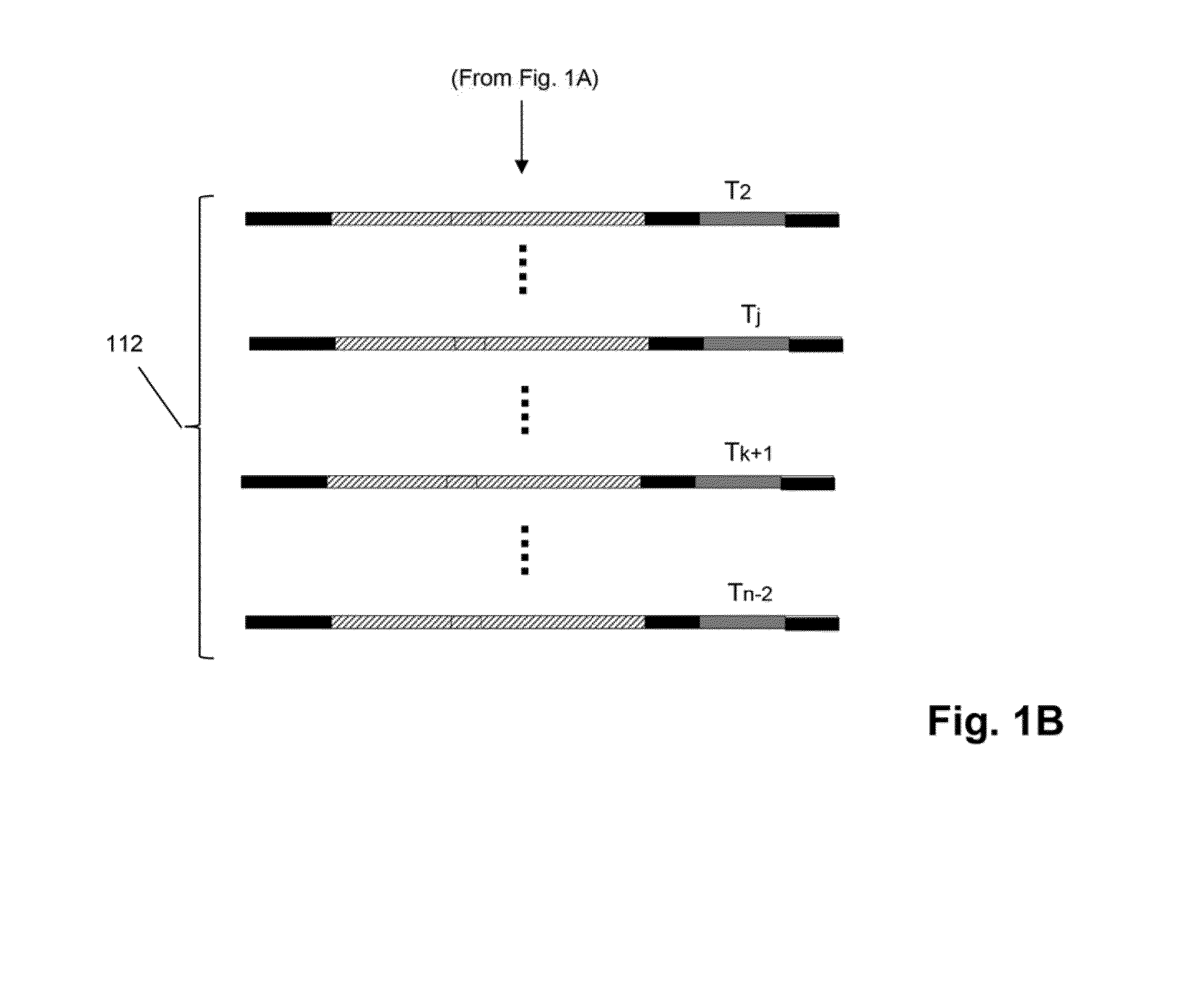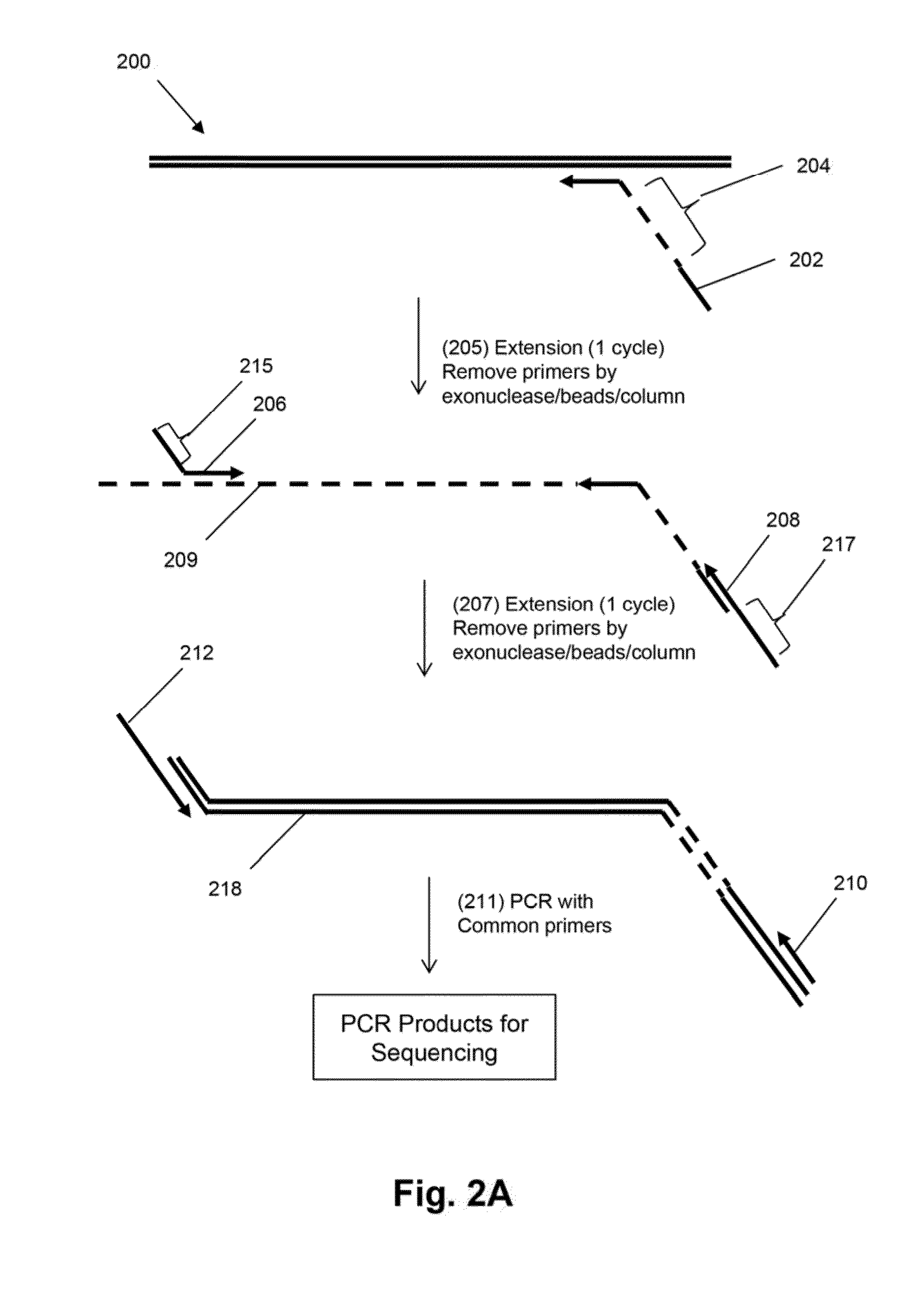Mosaic tags for labeling templates in large-scale amplifications
a technology of labeling templates and mosaic tags, applied in the direction of microbiological testing/measurement, biochemistry apparatus and processes, etc., can solve the problems of difficult screening and detection of rare mutations, significant non-specific background amplification, and the level of amplification and sequencing errors
- Summary
- Abstract
- Description
- Claims
- Application Information
AI Technical Summary
Benefits of technology
Problems solved by technology
Method used
Image
Examples
example
[0032]Instead of a string of “N” bases, such as “. . . NNNNNNNNNNNNNNNN . . . ,” (SEQ ID NO: 5), the string of random “N” bases is broken up with insertion of specific bases (constant regions) that will minimize the interaction of molecular tags with specific oligos used (either manually or by silicon software to pick the right fixed bases). For example, the above string of N's may be broken up as follows:
. . . NNetNNtgNNgtNNgeNNtgNNgtNNtaNN . . . (SEQ ID NO: 6) The number of“N” (2 in above case) that can be placed together and the specific bases and its number used between “N” (2 in above case) will be depend on the specific oligos used. Therefore, a simple software program can be written to perform the specific function that can be used in silicon to minimize the interaction, allow the successful selection of the fixed bases. The number of “N” bases can be positioned in various different locations for the same molecular tags. For example, we can have: . . . NNctNtgNNNgtNgcNtgNNNgt...
PUM
| Property | Measurement | Unit |
|---|---|---|
| length | aaaaa | aaaaa |
| nucleic acid | aaaaa | aaaaa |
| concentration | aaaaa | aaaaa |
Abstract
Description
Claims
Application Information
 Login to View More
Login to View More - R&D
- Intellectual Property
- Life Sciences
- Materials
- Tech Scout
- Unparalleled Data Quality
- Higher Quality Content
- 60% Fewer Hallucinations
Browse by: Latest US Patents, China's latest patents, Technical Efficacy Thesaurus, Application Domain, Technology Topic, Popular Technical Reports.
© 2025 PatSnap. All rights reserved.Legal|Privacy policy|Modern Slavery Act Transparency Statement|Sitemap|About US| Contact US: help@patsnap.com



